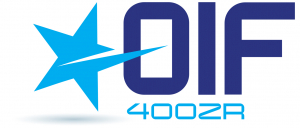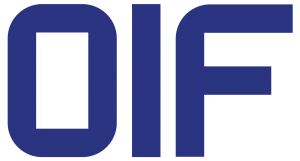OIF Publishes Implementation Agreement for 400ZR Coherent Optical Interface
Spec addresses 400ZR multi-vendor interoperability required for cloud scale data center interconnect (DCI)
Fremont, Calif.—April 29, 2020 – OIF, where the optical networking industry’s interoperability work gets done, today announced it has published the Implementation Agreement (IA) for a 400ZR coherent optical interface. The document is available now for all to download.
This IA, the first  OIF project with a scope that focused on interoperability at a specific distance, reinforces OIF’s critical role in creating solutions to fulfill industry requirements and accelerating market adoption of optical networking technologies.
OIF project with a scope that focused on interoperability at a specific distance, reinforces OIF’s critical role in creating solutions to fulfill industry requirements and accelerating market adoption of optical networking technologies.
“As a member driven organization, OIF’s work toward the 400ZR IA was the combination of significant interest from network operator members and component supplier members responding to that demand,” said Karl Gass, OIF Physical and Link Layer (PLL) Working Group – Optical Vice Chair. “The 400ZR IA is the culmination of this significant effort by OIF member companies and is critical for managing cost and driving interoperability for the industry.”
Developed to create an interoperable, low-cost 400 Gigabit coherent interface, the 400ZR IA addresses two applications:
- Amplified, point-to-point DWDM links with reaches of 120 km or less
- Unamplified, single wavelength links with a loss budget of 11dB
The 400ZR project was initiated when large-scale data center operators and their suppliers approached OIF to develop an interoperable coherent interface that transports 400 Gigabit Ethernet over longer distances. Traditional network operators also became interested in 400ZR for their metro needs. Based on their different requirements, OIF developed specs and tweaked the channel requirements so the IA would benefit both data center and network operators. While developing the IA, OIF collaborated closely with other standards bodies.
“400ZR is a key enabler of Microsoft’s regional architecture for the 400G generation,” said Mark Filer, Principal Optical Engineer in Microsoft Azure. “The creation of a multi-vendor, interoperable coherent interface to meet these needs would not have been possible without the extensive work and cooperation of OIF members and leadership.”
“The 400ZR IA is an example of OIF’s ability to quickly and effectively mobilize opinion and to bring interoperability to a rapidly evolving world,” said Andrew Schmitt, Directing Analyst at Cignal AI. “The 400ZR specification is the organization’s first step to establish broader interoperability among coherent transport interfaces.”
The IA aims to enable interoperable, cost-effective, 400Gb/s implementations based on single-carrier coherent DP-16QAM modulation, low-power DSPs supporting absolute (Non-Differential) phase encoding/decoding, and a Concatenated FEC (C-FEC) with a post-FEC error floor <1.0E-15. 400ZR operates as a 400GBASE-R PHY.
No restriction on the physical form factor is implied by the IA (QSFP-DD, OSFP, COBO, CFP2, CFP8), but the specifications target a pluggable DCO architecture with port densities equivalent to grey client optics.
About OIF
OIF is where the optical networking industry’s interoperability work gets done. Building on 20 years of effecting forward change in the industry, OIF represents the dynamic ecosystem of 100+ industry leading network operators, system vendors, component vendors and test equipment vendors collaborating to develop interoperable electrical, optical and control solutions that directly impact the industry’s ecosystem and facilitate global connectivity in the open network world. Connect with OIF at @OIForum, on LinkedIn and at http://www.oiforum.com.
PR Contact:
Leah Wilkinson
Wilkinson + Associates for OIF
Email: leah@wilkinson.associates
Office: 703-907-0010

